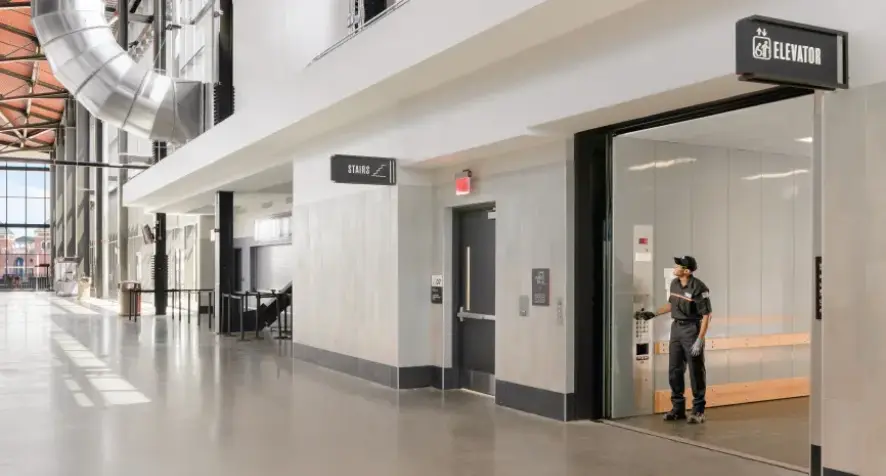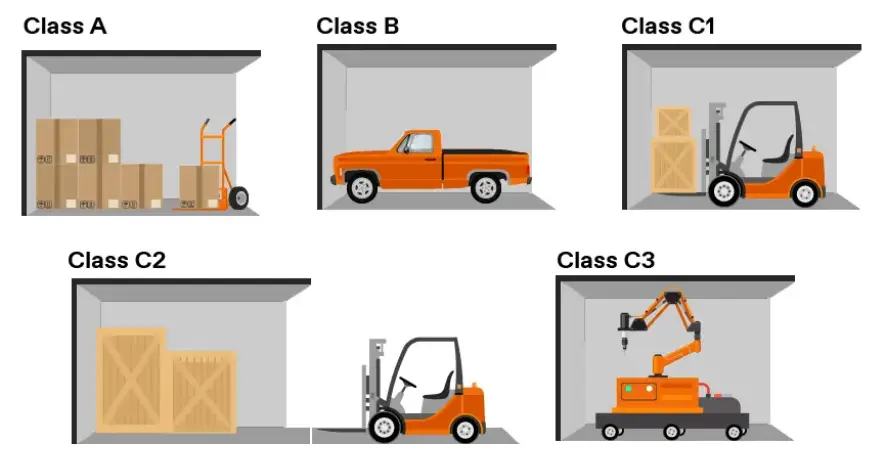Freight and service elevators in the E-commerce world
by David Gerson, Director of Marketing
Two converging trends — the rise of e-commerce and growing urbanism — are creating big challenges for cities and commercial buildings. In the last year alone, we collectively spent over $431B in online purchases. By 2025, that number is expected to grow up to $536B. The impact of that growth has massive implications for our infrastructure — both inside and outside of the buildings we call home.
E-commerce may simplify our lives in some ways such as 24/7 availability, wide selection of vendors goods and potentially lower prices, but it complicates our lives in other ways. "...Impacts include increased traffic and emissions from delivery vehicles, greater competition for curb space during deliveries, and greater demand for land for warehouse and distribution centers."
This dramatic growth with lack of corresponding infrastructure explains why trucks, currently 7 percent of U.S. traffic, create 28 percent of the nation’s congestion. The resulting traffic also contributes to increased pollution and climate-changing greenhouse gases.
Most modern American cities were simply not created with this level of package delivery volume in mind. Delivery trucks are forced to compete for driving and parking space with commuters, residents, bike lanes and public transportation. Once the packages get delivered to the intended building, the next challenge is getting the parcels to the tenant.

The bulk of residential buildings are not equipped with large storage facilities to handle the increasingly diverse requirements of our E-commerce lifestyles.
In just a few clicks, you can buy a couch on Wayfair, a 70" TV on Best Buy and an entertainment center on Amazon. It's so easy for us, but what happens at the loading dock? Where do all these items get stored? Many mailrooms were built for letters or magazines. Very few can act as local warehouses.
Lastly, how do these goods get up to the tenant’s office or apartment?
Within buildings, the demands on freight and service elevators have never been as acute as they are today. Compared to passenger elevators, freight and service cars, which travel at slower speeds, can carry much heavier loads as they’re designed to withstand tougher working conditions.
When specifying a freight or service car for a building, here are some important things to consider:
Class - What type of freight will you be moving? Will it only be consumer goods, or will you need forklifts and other heavy machinery to be transported as well. Consumer goods would be classified as "Class A: General Freight Loading."

Building height - Hydraulic elevators are renowned for their ability to lift heavy weights at relatively low cost compared to traction elevators. The limitation of hydraulic elevators are the limits to the building heights they can service. For 2-4 stories, they are the ideal solution. Above 5 stories, traction elevators are the only option.
Who is using it? - In a residential building, often a "service" elevator has to double as a passenger elevator. In many situations, large protective blankets are suspended from the top of the elevator car to help prevent damage to the walls or floors when moving freight. Unfortunately, this does not prevent all damage as tenants try to maneuver heavy packages or furniture in these small spaces. It's important to specify highly resilient fixtures and materials on the walls, floors and Car Operating Panel to minimize the negative impacts and costs from accidents when they occur. Function over fashion is key for these elevators.
Freight or service - Although the words are often interchanged, there are big differences between a "Freight" and "Service" Elevator. The most notable difference will be the doors.
Many freight elevators have vertically opening gates or doors rather than traditional horizontal opening, solid metal doors. This provides the widest possible opening for carts, dollies or other large items to avoid damaging the elevator when moving on and off. The interior of the elevator car is designed with utility in mind above aesthetics.
The door will be heavily reinforced, the walls made of heavy-duty steel to reduce damage and downtime along with a non-skid floor engineered for heavy traffic.
Weight capacity - A typical passenger elevator has a weight capacity of around 2,500 to 3,500 lbs. A service elevator has a weight capacity of approximately 4,500 to 5,000 lbs. A freight elevator can be designed to handle up 20,000 lbs. or more!
As our demographics, geography and purchasing habits change, we are going to spend more time thinking about how these new behaviors affect our existing infrastructure — both inside and outside of our buildings. Strategic urban planners, architects and building operations professionals will need to work together to create integrated systems that can respond to the changes that our increasingly digital future will create.
 United States
United States

